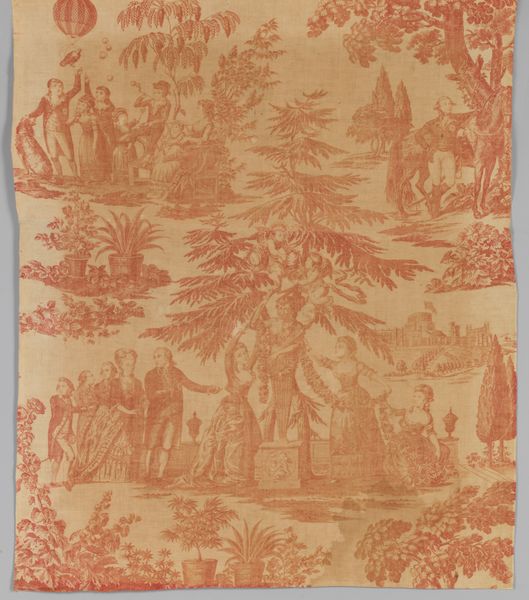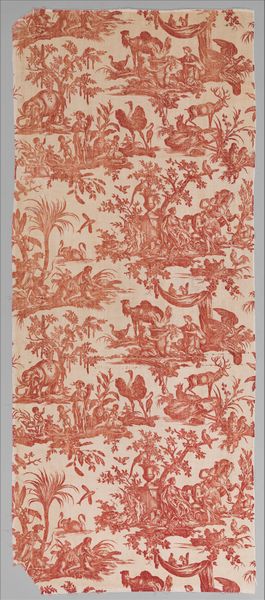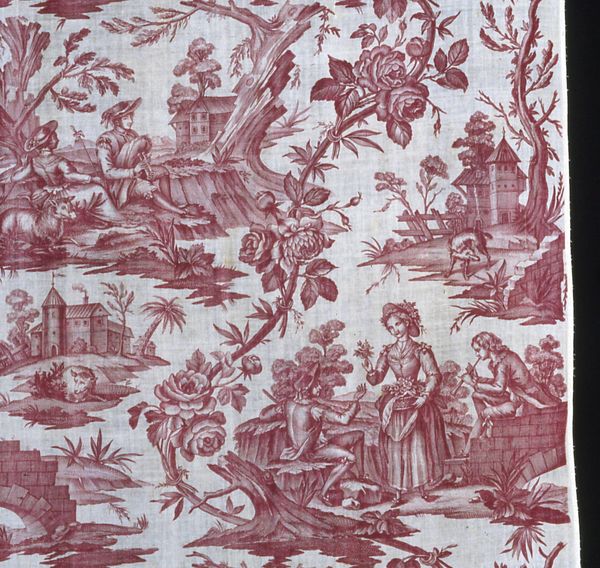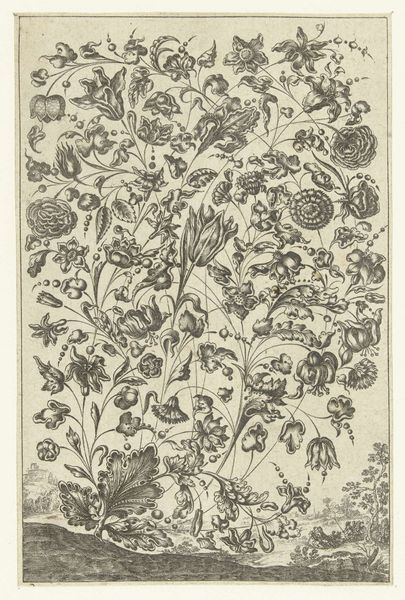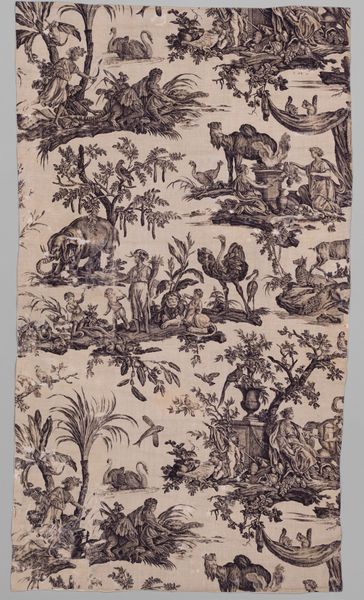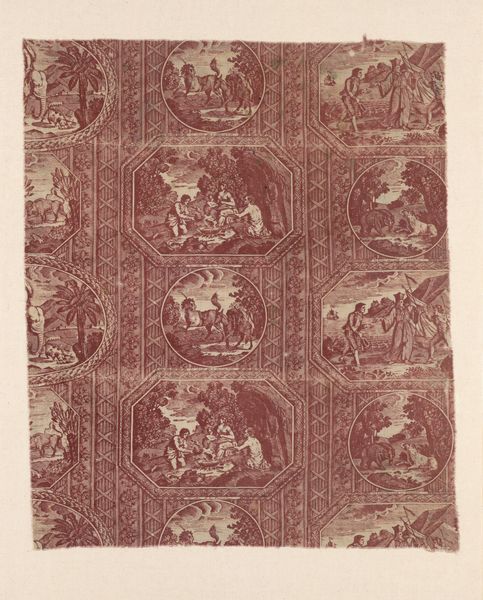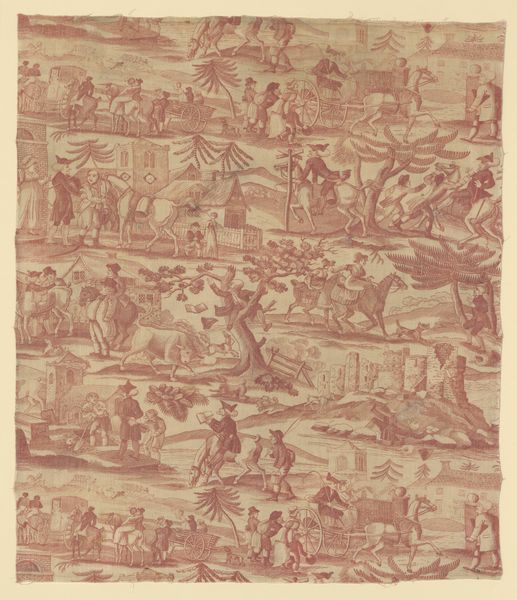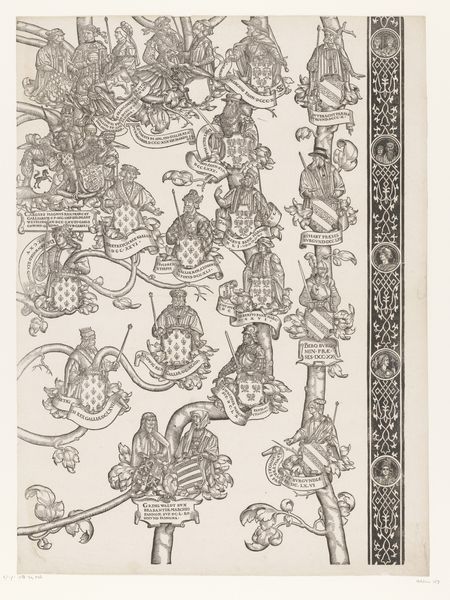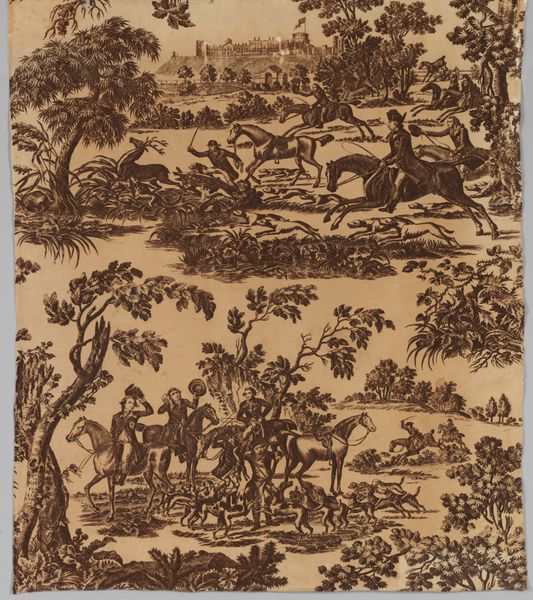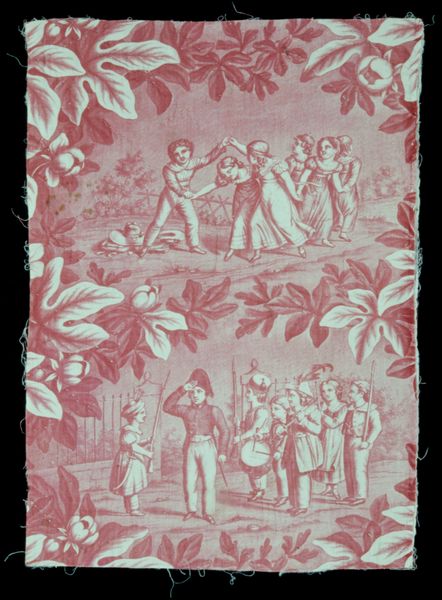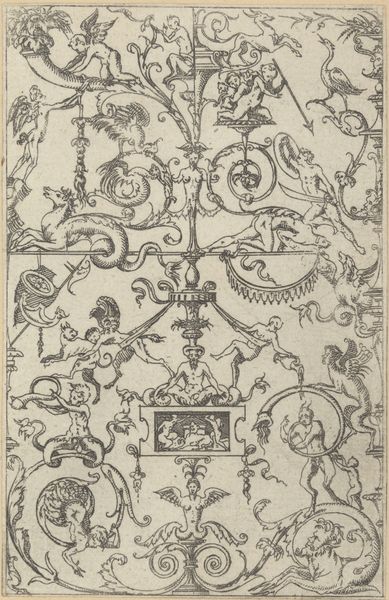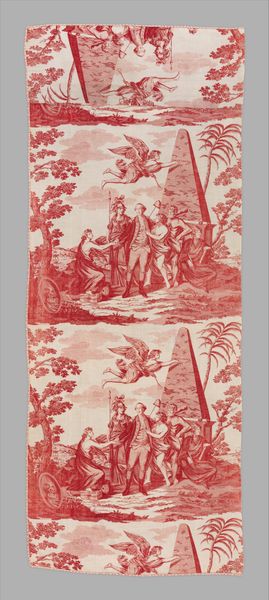
drawing, print, engraving
#
drawing
#
allegory
#
narrative-art
#
pen drawing
# print
#
pen sketch
#
history-painting
#
engraving
Dimensions: overall: 65.6 x 53.4 cm (25 13/16 x 21 in.) Original IAD Object: 25" long; 17 1/2" wide
Copyright: National Gallery of Art: CC0 1.0
Curator: This intriguing work is entitled "Apotheosis of Franklin," and it dates from between 1935 and 1942. The artist is listed as A. Zimet, and the piece employs engraving techniques to create what feels like both a drawing and a print. Editor: My immediate thought is "propaganda"—not necessarily in a negative sense, but in its power. The repetition of forms and patterns creates a really intense feeling. And, the monochromatic palette amplifies that feeling of being presented with something Very Important. Curator: You key in on a key point – the repeated imagery. It’s allegorical; almost every element carries a specific weight. Note the deification of Franklin, juxtaposed with symbols of American Liberty. The “Temple of Fame,” the figure of Britannia… each references historical narratives and colonial values. Editor: And beyond that, what about the material used? As an engraving it had to be reproduced on a scale. I want to know about that process. Was this meant for individual consumption or mass distribution? Because those labor practices also load it with meaning. And even the imagery: the chariot, for instance. That feels intentionally anachronistic, almost performative in its appeal to older ideals. Curator: The anachronisms highlight a purposeful link to classical ideals of governance. Observe how Franklin occupies the central chariot pulled by what appear to be leopards, animals of strength and regality. Then look up! Liberty is present with a Phrygian cap on a pole. It's referencing antiquity to reinforce the legitimacy of American Independence. The artist seeks to instill awe and respect by visually tying the young republic to ancient civilizations. Editor: Right, which almost inevitably circles us back around to what that young republic actually represented, especially considering it's creation was supported and financed by enslaved labor. Can we see that connection reflected in this artwork, in the production methods behind it, or in its consumption, distribution and uses within its original historical context? Curator: Your questions regarding labor and consumption remind me to reflect more deeply. Viewing this piece through the lens of production exposes its complex entanglement with history and perhaps even unresolved social narratives. Editor: And perhaps we both are finding ourselves face to face with a starkly illustrated paradox, where idealized forms of liberty come entangled with the methods that shaped them. Thank you!
Comments
No comments
Be the first to comment and join the conversation on the ultimate creative platform.
